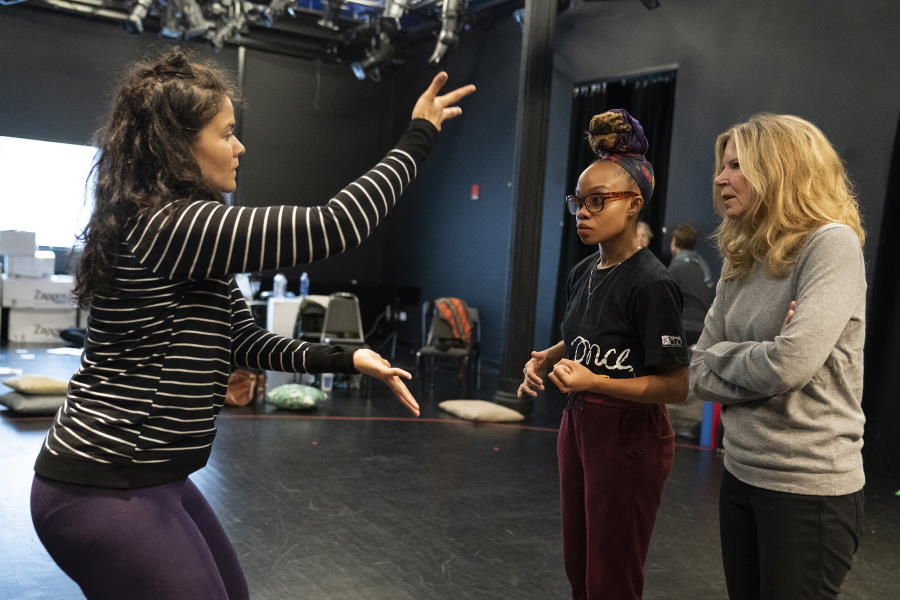This piece is one in a series on disability and theatre.
In June 2020, the We See You, White American Theatre letter shook the theatre field, triggering a wave of renewed commitments to equity, diversity, and inclusion (EDI) among the predominantly and historically white theatre institutions that make up white American theatre. To carry out their commitment, some institutions are beginning to diversify the racial makeup of their leadership through new hires and promotions. As more Black, Indigenous, and people of color (BIPOC) artists rise to leadership positions of their predominantly white institutions, the racial representation in leadership of the theatre field seems to be slowly, slightly changing.
This does not seem to apply to the D/deaf and disabled sector of the field. Some of the most well-known D/deaf/disabled-specific theatres—Deaf West, Theater Breaking Through Barriers, and the Apothetae—are all led by white men, and a number of others (Phamaly Theatre Company, National Disability Theatre, Detour Theatre) are run by white women. Based on this, one could easily conclude that the D/deaf and disabled sector has a lot more work to do on racial inclusion and intersectionality on the leadership level. But before jumping to that conclusion, it is important to ask why the work of these theatres and their white leaders has been more widely accepted as representative of the D/deaf/disabled community by the larger, predominantly white and able-bodied theatre community, rather than the work and leadership efforts of their BIPOC counterparts.
Observing the disparity in visibility and perceived prominence between those white-led and BIPOC-led theatres, actress Alexandria Wailes (she/her)—who was the Lady in Purple in the Public’s 2019 production of for colored girls who have considered suicide/when the rainbow is enuf—points to two theatres run by BIPOC women: Seattle’s Deaf Spotlight, run by executive director Patty Liang, and Visionaries of Creative Arts (VOCA) in Washington, D.C., with artistic director Michelle Banks. These theatres, Wailes said, are often not mentioned in the same breath as theatres like Deaf West. One reason for Deaf West’s high profile, obviously, is that it has been represented on Broadway twice, in Tony-nominated revivals of Big River and Spring Awakening. Few theatres, let alone D/deaf and disabled theatres, have the resources and the connections to get their work to that stage. D/deaf and disabled theatres, Wailes said, “have the ideas, they have the creatives—it’s all in there, but they don’t have the connection.”
Her observations point to an elephant in the room: the all-too-common conflation of prestige and accolades with leadership in the theatre field, the kind of prestige and accolades that only come with the “right” resources and connections. Leadership thus defined—as being measured in status and media exposure—is therefore elusive to those outside the proximity of the historically established circle of theatre elites, who are still largely white, male, and non-disabled. If what makes a theatre “leading” is visibility and accolades, and being in a high-ranking position at such an institution makes someone a leader, particularly a representative of the marginalized community to which they belong, there is a self-reinforcing process that continually advances the already privileged. This necessitates taking a deeper look at the path to institutional leadership for disabled people of color.
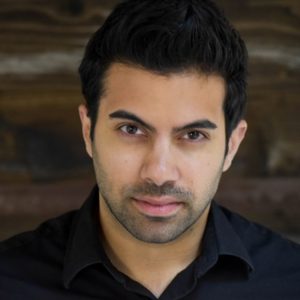
“You need experience to be a leader,” said actor, director, and accessibility consultant Richard Costes (he/him), “but you’re never going to get experienced because you never had the experience in the past. It’s really a self-defeating cycle. I think it’s especially true, not just of disabled communities, but people of color within the disabled community, who from a very, very young age have often been told they can’t [be a leader], they shouldn’t do that, they would never be successful at that, just because the structures aren’t there to support them. So they never get the chance.”
Costes is currently a member of ADA 25 Advancing Leadership, a Chicago-based nonprofit organization whose mission is to “increase civic engagement and diverse leadership in the Chicago region by developing and building a network of leaders with disabilities—consistent with the spirit of the Americans with Disabilities Act.” As a member of ADA 25, he participated in the organization’s virtual retreat, which was designed to address the aforementioned dearth of opportunity for disabled folks to gain leadership skills.
“We would learn from speakers, we do some exercises, all designed to sort of build up our awareness of the kind of leadership style that we are best at, find our weaknesses, find ways to overcome those weaknesses,” said Costes, who is also on the board of the National Theatre of the Deaf and the Artist’s Council at 3Arts. Since programs such as ADA 25’s are still just emerging, they cannot simply resolve the issue overnight. “What ends up happening is the pipeline that we develop as disabled leaders, as disabled people of color, tends to be all self-taught,” Costes continued. “We create our own organizations; we create our own mini-societies within our community to try and build each other up.”
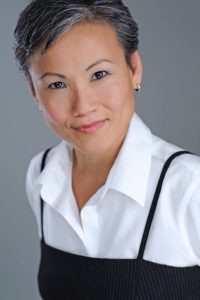
This is evidenced by several BIPOC-led D/deaf and disabled organizations and events around the country. One of them is Deaf Spotlight’s Short Play Festival, which will consist of six 10-minute plays written by Deaf artists and starring Deaf actors. Monique “MoMo” Holt (she/her), the festival’s creative director, emphasized the importance of showcasing the new and original works of Deaf playwrights when the Deaf stories that are often onstage were written decades ago and repeat the narrative of “poor Deaf people.” By putting the spotlight on Deaf playwrights, Holt hopes that it will inspire more D/deaf people to create their own works—that these playwrights can lead by example. In the case of Deaf Spotlight’s Short Play Festival, another type of leadership is at work, leadership that centers being an example. In Holt’s words, “Leadership is mentorship, being a role model.”
Actor/playwright Ryan J. Haddad (he/him) agreed, noting that leadership can take the form of being someone to whom the people from the same community can look to as an example. Before attending the most recent Broadway production of A Christmas Carol, Haddad found out that the production featured Sebastian Ortiz, a then-7-year-old actor who, like Haddad, had cerebral palsy and used a walker.
“I had never seen another public figure with my model and style of walker,” said Haddad. “The moment I bought the ticket, the moment I sat in my seat before the curtain or the lights went down, or even before he entered the stage, I knew the instant I saw him I was going to start crying. I just did. Is it any form of pity? Absolutely not. And I don’t want it to be misconstrued as that. It is: Oh my God, he reminds me of myself as a child. If only I had someone to look at when I was his age, my path would have maybe been completely different.”
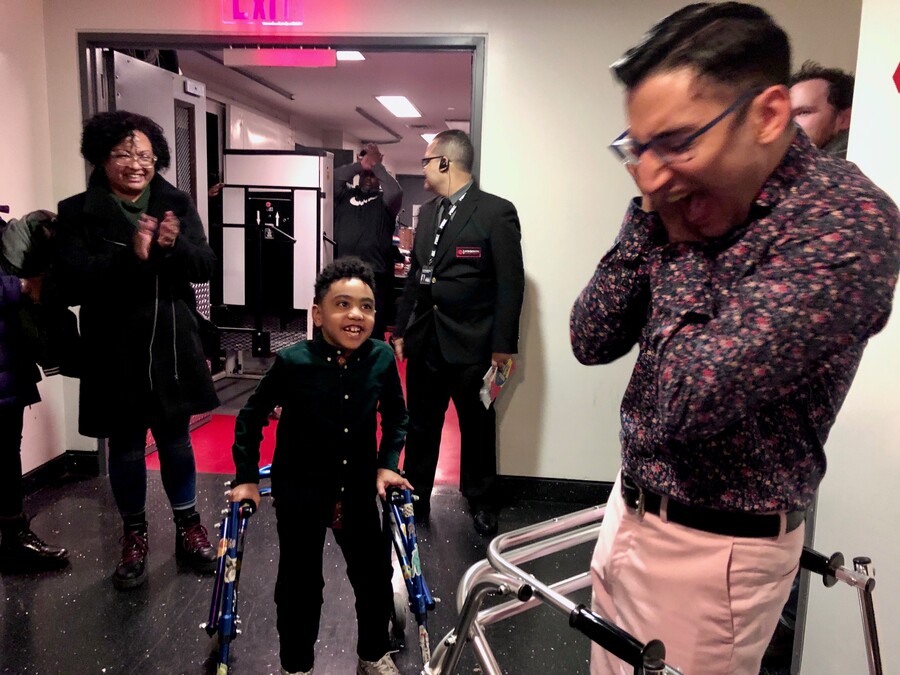
In turn, Ortiz looked up to Haddad as an example. Haddad recalled their exchange when Ortiz attended Haddad’s show Falling for Make Believe at Joe’s Pub. The show was about Haddad’s childhood, and Ortiz enjoyed it thoroughly. Afterward, Ortiz, who Haddad recalled as “thrilled,” as well as “the joy on his face,” asked Haddad more about his childhood when Haddad came out to the lobby after the show.
“I said, ‘I didn’t have someone like you,’” Haddad said he told Ortiz. “‘You’re impacting kids your age, you’re impacting kids who are older than you, and you’re impacting full-grown adults, by just showing up as yourself and succeeding.’”
The exchange between Haddad and Ortiz exemplifies a kind of reciprocal mentorship. Both look up to and support each other. Costes, Holt, and Wailes all also hope to use their status and clout to support other disabled and D/deaf artists and build more of a community.
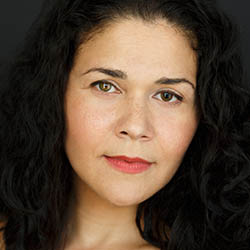
“I do my best to be mindful of creating space, not just for myself, but for other theatre artists,” said Wailes of her presumed leadership position, “giving them space to listen, to be heard, to be present, and to make their ideas known.”
Though disabled and D/deaf leaders of color in the theatre field have been doing this notable work within and for their communities, the lack of wider acknowledgement has caused this work to get lost in the mainstream narrative. This makes it very difficult to create a truly intersectional movement toward equity and justice, which can only be achieved if all historically marginalized communities are able and willing to work together to dismantle oppression.
It’s a hopeful sign when a company like Woolly Mammoth Theatre Company in Washington, D.C., a LORT theatre with a $4 million budget, programs two plays centering on protagonists written to be disabled and played by disabled actors, Mike Lew’s Teenage Dick and Haddad’s Hi, Are You Single? This is extremely unusual, perhaps even unprecedented, since most predominantly non-disabled theatres don’t program more than one play like this per season, and most disabled and D/deaf-specific theatres either do not have the budget to program more than one new work in a season, or they fill up the season with revival productions in which disabled actors play characters originally written as able-bodied. According to artistic director Maria Manuela Goyanes (she/her), the decision to program both of shows started with the intention of lifting up these works and the artists involved.
“It was incredibly intentional to think about that representation and how are we actually helping push the American theatre along in this and push ourselves,” Goyanes said. “I feel really lucky to be working in a theatre company like Woolly Mammoth, where challenging ourselves is in our DNA. That’s what it is that we’re here to do.”
“Whether it’s intentional or not, we live in a society that, if things are not mentioned, it’s almost guaranteed that something will slip through the cracks.”
When asked if she observes any articulable obstacles in finding disabled actors of color to work with, Goyanes noted that it’s an opportunity issue, with the vast majority of acting opportunities for those with disabilities coming only when a theatre is looking for a role that specifically demands a disabled actor.
“In those moments, a casting director will go out and find a whole group of people and show those people to a director,” Goyanes said. “When we are casting another play, it is very rare for me to see disabled actors represented on that list, whether they be white, and certainly they are not on the list if they are people of color. Part of this is because the question of representation and getting an agent is part of the system, and that is absolutely swimming in the waters of white supremacy.”
Once again, we see how connections and representation determine access to the elite circle of the theatre field, which in turn determines whose work is sought after and celebrated. It would seem that one solution is, as always, inclusion—to wait for the historically and predominantly white, cis, male, and non-disabled circle of theatre elites to open their doors.
“I don’t like the word ‘inclusion,’ because it implies that you have the problem,” said Holt. It’s an idea she also referenced in her speech at TCG’s 2020 virtual conference, where she posed the example of “a group of hearing people and one Deaf person. The hearing people want to invite the Deaf person in, but this Deaf person doesn’t speak or hear. So the hearing people have to hire an ASL interpreter for the Deaf person. This sounds like Deafness is a burden.”
“Inclusion,” Haddad agreed, can sometimes be turned around and be an obstacle for advocacy, especially when the advocate happens to be the only one from a marginalized community in a space.
“Some, to be the devil’s advocate, will say, ‘Well, so you’re being included, what’s the problem? Why are you complaining? You’re being included. That’s what you wanted. That’s what you asked for,’” Haddad said. “But there is something murky about being the only one in the room and the only one to bring the ideas or the priorities that you have to a room and have to voice them.”
So if inclusion is not the solution—or at least not the whole solution—what is? For Holt, the goal is intersectionality. As she asserted in her speech, “Intersectionality means that all of us come together and create a collective world.”

This article has taken the position that leadership means mentorship and community care, distinct from visibility and accolades. This is not a widely held view. In fact, the fieldwide tendency is to invest prestige and merit in the question of whose work is being seen and highlighted. The fetishization of that visibility has also influenced the impact and meaning of the We See You, White American Theatre letter.
The WSYWAT letter is a monumental and powerful call for the theatre field to dismantle white supremacy within it. Goyanes said it best when she calls it and the subsequent demands “a real love letter to the American theatre. It represents the lived experience of artists of color in our field. It is really an exhaustive list of demands. But it is also not comprehensive of everything that possibly could be done in the American theatre to center equity and justice.”
Noticeably missing from the text were any explicit mentions of intersectionality, and the experiences of disabled and D/deaf folks of color.
“Whether it’s intentional or not, we live in a society that, if things are not mentioned, it’s almost guaranteed that something will slip through the cracks,” asserted Wailes, whose point speaks to the fieldwide tendency to validate only those things that are prominent on a platform within proximity of the elites—Tony winners, for instance—whose signatures no doubt helped increase the letter’s reach.
No systems of oppression—not racism, not ableism—operate independently. The seeming issue of the lack of leaders of color in the D/deaf and disabled sector of the theatre field actually reveals the larger, intersectional problem of the theatre field’s over-investment in the media exposure and accolades determined by the predominantly white, non-disabled elites of the American theatre. Dismantling this detrimental system would mean people having to give up power gained from this system; having to reset their career paths away from white American theatre’s accolades and instead toward their communities; and having to restructure the entire operation of the industry around those areas. Do we dare to imagine a theatre field that centers mentorship, community, and care, not competition for what white American theatre wants to see, award, and uplift through the “right” connections?
Penny Pun (she/her) is a playwright, dramaturg, and founding member of Theatre Producers of Color.
Creative credits for production photo: Hi, Are You Single?, written by Ryan J. Haddad, directed by Laura Savia and Jess McLeod, with scenic and costume design by Lawrence E. Moten III.

